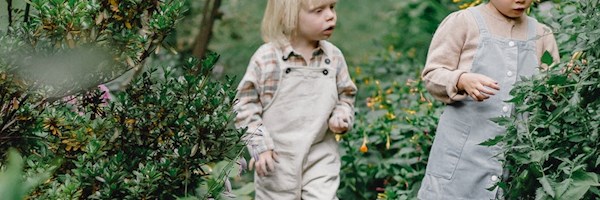Gardening is a fantastic way to stimulate the senses, and one of the most powerful ways it does this is through fragrant plants.
Many plants are scented to attract the pollinators essential for their survival, like butterflies and bees. Flowering plants, like honeysuckle and lavender, release their scent during the day when there is most natural light and temperatures are higher. These scented plants attract daytime pollinators like bees. Other flowering plants, such as ngel’s trumpet (brugmansia) and evening primrose, are pollinated by insects that are active after sunset, so they release their scent at night.
Leaf-scented herbs like rosemary, lavender, thyme and basil, release their perfume when their leaves are touched or crushed. To experience their fragrances to the full, you should plant them along pathways or as groundcovers between paving stones.
Position
Plants located close to the room and outdoor areas you spend most of your time in will bring even you greater enjoyment.
Plant them:
- On or next to the patio.
- Outside bedroom or study windows.
- At the entrance to your garden.
- Around a bench in your garden.
Aromatic foliage plants are perfectly positioned along a pathway where they will release their fragrance when brushed against.
Place containers with aromatic herbs next to the outdoor entertainment area, where they are easily accessible for cooking.
Indigenous options
Although the strongest floral scents are mainly found in exotic plants - like gardenias, frangipani, roses, brunfelsia and moonflowers – there are several indigenous scented plants that are ideally suited to South African growing conditions.
Life is a Garden, a division of The South African Nursery Association (SANA), suggests the following:
- September bells. Rothmannia globosa is a small to medium tree with beautiful clusters of creamy blossoms that are pleasantly scented.
- Cape chestnut. Calodendrum capense is a medium to large, fast-growing tree. It has fragrant pink flowers and aromatic leaves – a double bonus.
- Buddleja. The 4m tall weeping sage (Buddleja auriculata) has an especially lovely fragrance, while the false olive (B. saligna) gives off a strong honey scent.
- Wild camphor bush. Tarchonanthus camphoratus is a shrub or small tree with foliage that smells strongly of camphor, especially in the hot sun - ideal for coastal gardens.
- Helichrysum. Helichrysum populifolium is a pleasing garden shrub. The flowers smell of honey, and the aromatic leaves have a musky scent.
- Buchu. This group of plants is an important component of the ‘fynbos smell’ so well known and loved in the Cape. Many Agathosma species are available.
- Pelargoniums. Many Pelargonium species have fragrant foliage. Try P. crispum with its lemony scent or the rose scent of the tough P. capitatum. Use the leaves in scone recipes. Pelargonium citrosum smells of citronella oil, which repels mosquitoes and other insects.
- Wild rosemary. The leaves of the 1,5m tall Eriocephalus africanus can be used in cooking.
- Confetti bushes. Coleonema species have foliage with a strong, clean scent rather like tea tree oil, as well as attractive blooms.
- Wild jasmine. Jasminum multipartitum is a climber with sweet perfume and can also be used as a freestanding shrub.
- Asparagus. Asparagus falcatus is a climber with scented white blooms that will grow in semi-shade.
Avoid placing too many scented plants too close to each other, as it may be difficult to distinguish their different perfumes. You need to be able to enjoy each plant’s unique fragrance.
